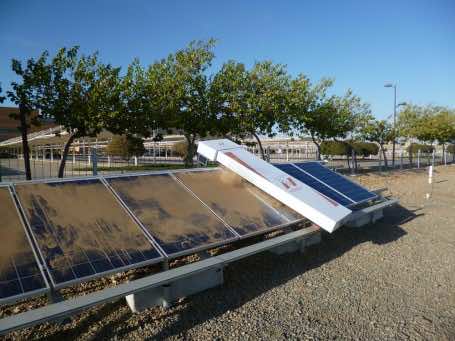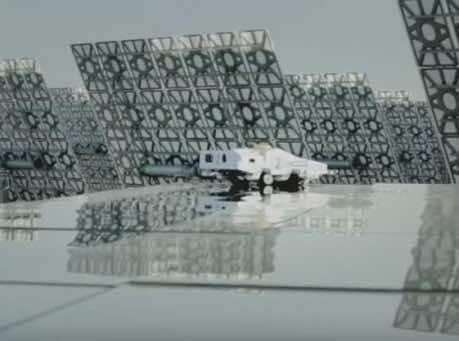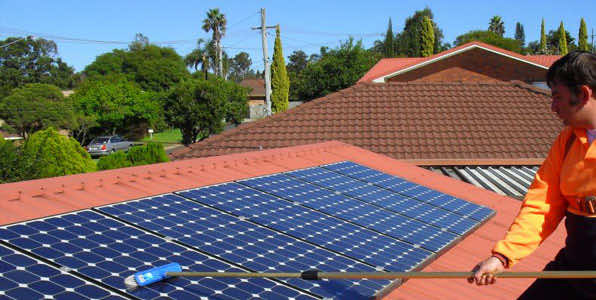Installing solar power is cheap enough, but to maintain it at full capacity is indeed a challenge. Deserts have a high value of irradiation and therefore, are good candidates for installing solar panels and power generation facilities. But, they do have one significant problem in the sand deposition as you will likely have your panels covered with sand at the end of each day. It will decrease the power of the power generation capacity by a fraction, and we have to do something about it.
UAE-based solar power company named NOMADD desert solar says that up to 0.8 percent reduction in power is observed daily and at the end of a typical sand storm, over 60 percent power capacity is lost. Also, it poses a danger of sand being permanently embedded the panel surface. So, steps need to be taken to ensure smooth generation of power by clearing out sand from the surface of the panels. A desert solar panels also present several design challenges for us. It must be able to clean it with speed and not use much water in operation since deserts have scarce water. Also, the sand can scratch the top surface of the panel making it rough and decreasing the efficiency of the panels so we have to use a process that won’t drag the sand on the surface too much. The volatile human labor markets are also a problem, and the system should also cut its reliance on it.

A Boston University (BU) team had been working on a self-cleaning device called Transparent Electrodynamic System (EDS) that can eventually replace the manual systems in operation. It can be incorporated into a solar array or applied directly to the panels via a silkscreen printed film. The device works by elevating small dust particles away from the panel using small electric charge generated by the panel itself. It can potentially clean more than 90 percent particles present on the surface. The underlying idea was taken from the perfect engineering ability of nature as human lungs have a natural cleaning mechanism similar to this.
The idea initially caught the attention of NASA when it initiated its own program in 2003. The main purpose was to keep the solar panels clean from sand and dust in Mars missions. They handed Malay Mazumdar, the lead researcher with a 50,000$ funding as Ignition award. Afterward, he got in touch with Abengoa Solar company that operates in California and began to develop his device further. As of today, it is still undergoing rigorous development phases.

In an entirely separate development, Seamus Curran, the professor at the University of Houston has developed a self-cleaning system that uses a hydrophobic coating. It not only protects from granular deposits but also protects against staining and weathering of the tops surface. It has already been tested at the FOCAS Institute in Dublin Institute of Technology, Ireland and works well both in marine and high dust environments like plains and deserts.
However, the best application of any idea has been in Israel at the moment with the Ketura Solar plant in the Negev desert. Around a hundred Eccopia E4 robots are mounted on a frame and move along laterally cleaning surfaces with the help of microfibers. These small strands ensure that the top layer isn’t scratched to hell. Ecoppia claims that these particular cleaners can clean 99 percent dirt build-up off the solar panels. A similar approach has been recently undertaken by NOMADD in the Saudi Arabian desert with experts from King Abdullah University of Sciences and Technology.
So, robots and electrostatic charges appear to be the future of dust cleaning. Here is the video from Ecoppia:



